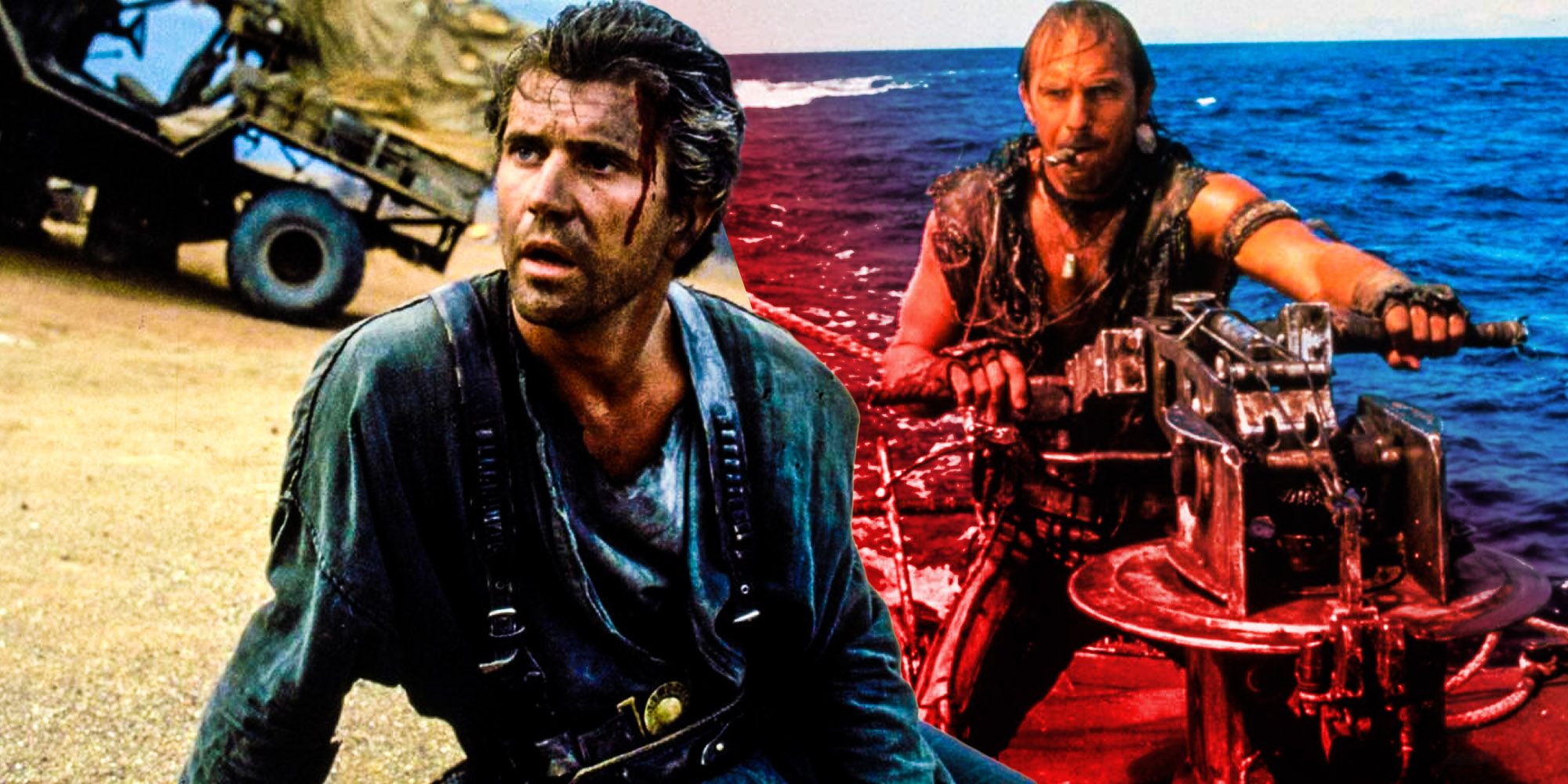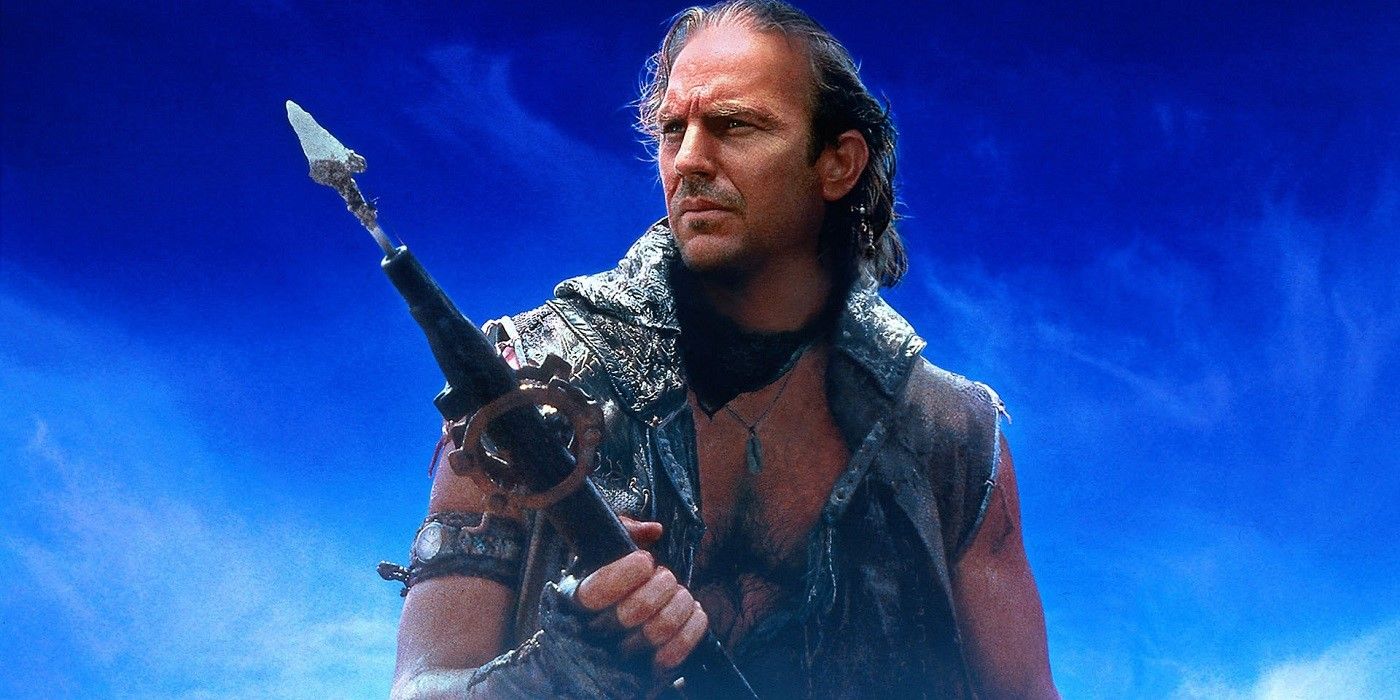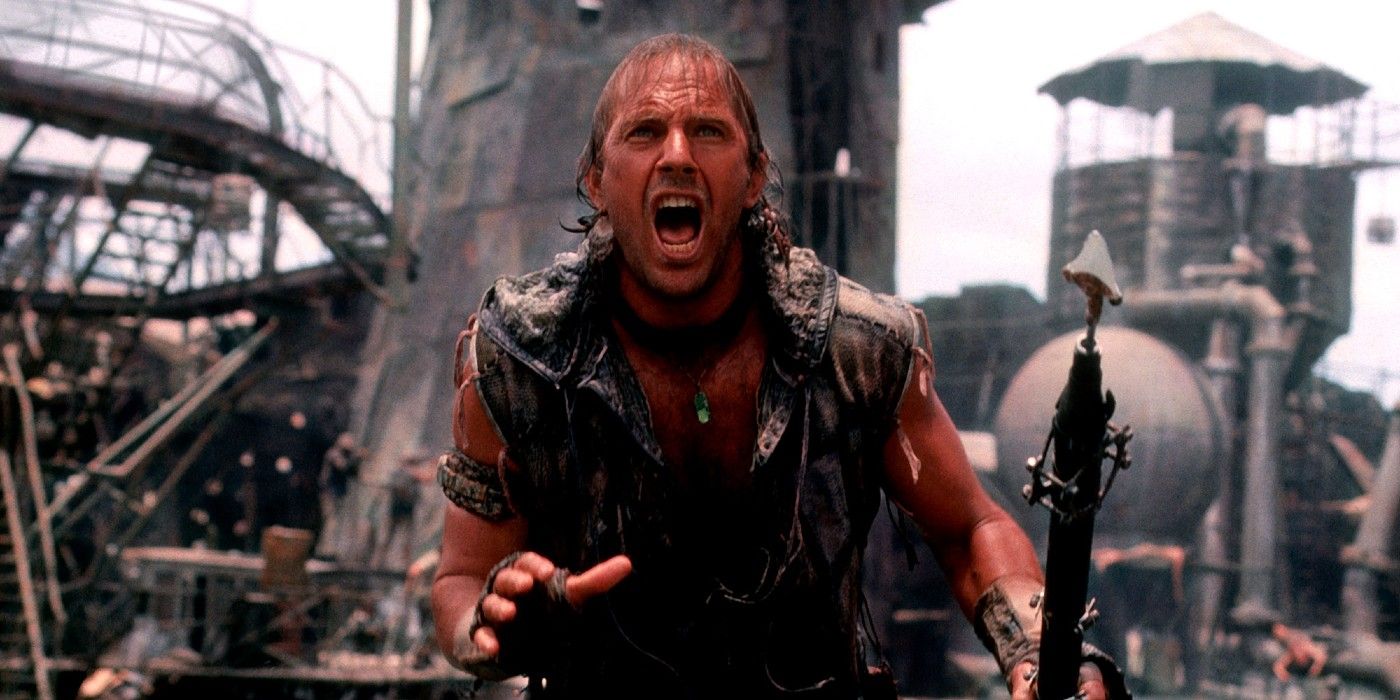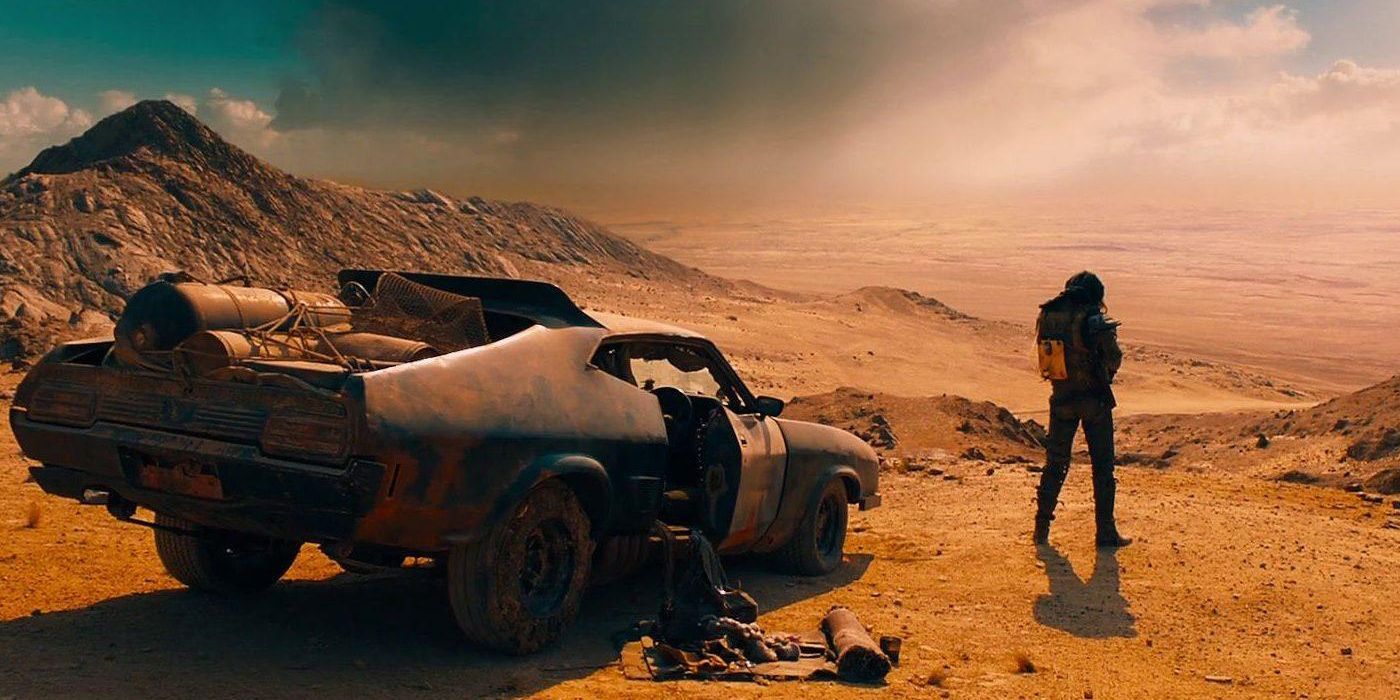Waterworld shamelessly borrowed much of its post-apocalyptic aesthetic from Mad Max, so why couldn’t the movie recreate that franchise's massive success? Released in 1979, Mad Max was a surprise hit for director George Miller. Star Mel Gibson was soon offered major Hollywood roles thanks to the cult thriller’s success, and the series has largely maintained a positive reception throughout a trio of sequels.
The original Mad Max was a sparse revenge thriller that saw Gibson’s titular police officer driven to violence by a biker gang who murdered his family in a crime-ridden near future. The more heightened, over-the-top sequel The Road Warrior took place after an offscreen apocalypse occurred and turned the now near-mute Max into an almost mythic drifter. Despite the newly post-apocalyptic setting, The Road Warrior’s fast-paced action was still as bone-crunchingly realistic as the original movie.
In the years since the series began, Mad Max has had an outsized influence on sci-fi cinema at large, but one infamous blockbuster shamelessly stole from the franchise. The Mad Max movies, and The Road Warrior, in particular, provided the primary inspiration for the 1995 Kevin Costner vehicle Waterworld. An overlong and self-serious sci-fi spectacle, Waterworld managed to turn a profit despite its absurd budget but was panned by critics after its controversial production turned it into the most expensive movie of all time. Despite a few dissenting voices like Roger Ebert arguing for the project’s redeeming qualities, by and large, Waterworld was a resounding dud with critics at the time. So, what went wrong for the movie inspired by Mad Max, but so right for the series that influenced Costner’s blockbuster?
Waterworld & Mad Max’s Similarities Explained
Original Waterworld writer Peter Rader admitted that the movie began life as a Mad Max rip-off, while later contributor David Twohy cited Mad Max's first sequel as his biggest inspiration. The creative debt is clear, with Waterworld and The Road Warrior both featuring a near-mute hero who saves a small civilization from a band of marauders ransacking their supplies in a post-apocalyptic setting. Both movies feature cheesy villains, groups of disposable (and bizarrely-dressed) henchmen, and future economies based on bartering with drinking water and fuel. Credit to Waterworld, the movie does feature a memorably original setting thanks to its premise, with the entire earth being submerged beneath water thanks to rising sea levels. However, this ambitious element may also have been at least partially responsible for the film’s financial disappointment.
Waterworld’s Big Budget Versus Mad Max’s Cheap Thrills
Like the similarly seafaring ‘90s flop Cutthroat Island, Waterworld was not cheap. At all. The movie cost a then-record setting $175 million to produce - for context, it remains the twelfth-most expensive movie ever made even when adjusted for inflation. In contrast, Mad Max was once the most profitable film ever produced, having earned over $100 million on a budget of only $300,000. Miller’s thrifty original entry cost next to nothing to produce and was an unexpectedly huge success upon release, meaning the movie never had a famously long production process and ambitious vision to live up to, unlike Waterworld. In fact, George Miller later admitted that the original Mad Max was only set in the future to save on filming location costs.
This was a far cry from Waterworld, which required huge floating sets and groundbreaking technology that cost millions, setting the production back large sums of money before anything had even been shot. However, Road Warrior was the movie that provided the most inspiration for Waterworld, not just the original Mad Max, so it is hardly fair to compare Costner’s costly epic with Miller’s cult hit. However, that sequel also only cost $4 million to produce which, while far more than the original, was even close to a fraction of Waterworld’s ballooning budget. Moreover, The Road Warrior spent that money wisely, investing in as much onscreen action as possible. Waterworld, in contrast, spent much of its investment on a slower story, which was another major issue.
Mad Max’s Trim Runtime Vs Waterworld’s Bloat
At 135 minutes, Waterworld wouldn’t be considered an impossibly long blockbuster by contemporary standards. However, compared to the original Mad Max's trim 93 minutes and The Road Warrior’s 96 minutes, the movie had little reason to drag out its post-apocalyptic sci-fi story. The story of Waterworld is not a lot more complicated than that of Mad Max. As summarized above, most of the screen time of both movies is devoted to the antihero helping a small community contend with scavenging villains. However, Waterworld is far slower about setting up this story, which let some viewers feeling disengaged with the movie. In the world of Mad Max, less is more, and Miller’s movies have always prided themselves on telling believable stories set in clearly-etched futures without ever skimping on the action in the process.
Mad Max’s (Lack of) Exposition Vs Waterworld’s Worldbuilding
The mere mention of the upcoming Mad Max spinoff Furiosa’s epic scope was enough to worry many followers of the franchise, as the series' strengths have always lain in simple stories told well, as opposed to convoluted mythologies. Waterworld, on the other hand, attempts to explain its future and becomes utterly lost in lore as a result. Ironically, a lot of the movie's action is well-staged, but its slow pace and endless exposition meant its world was both more overexplained and, paradoxically, less easy to understand than Mad Max's, where viewers can all but guess what has happened between movies.
Where Waterworld felt the need to establish exactly how the world became flooded, whether there was a safe haven somewhere, and how its heroes survived the catastrophe, Mad Max doesn’t even address the franchise’s offscreen apocalypse. This is not to say the series isn’t environmentally conscious, with Mad Max’s fuel scarcity effectively predicting Peak Oil decades early. However, unlike Waterworld, Mad Max and its sequels deftly weave this unspoken backstory into the slickly produced movie, instead of grinding the action to a halt for an inelegant exposition dump.





